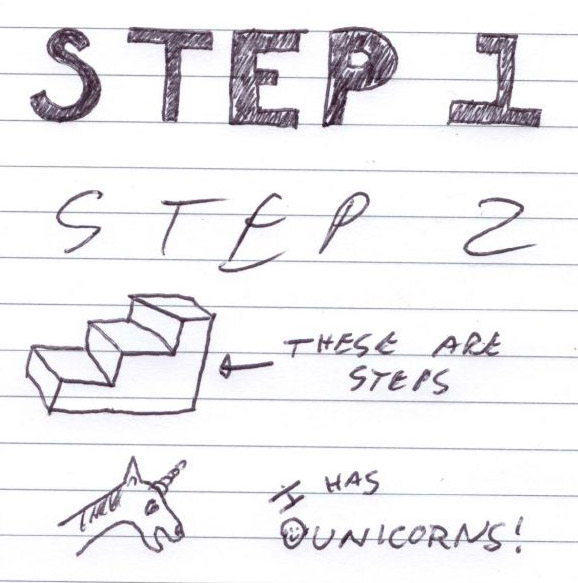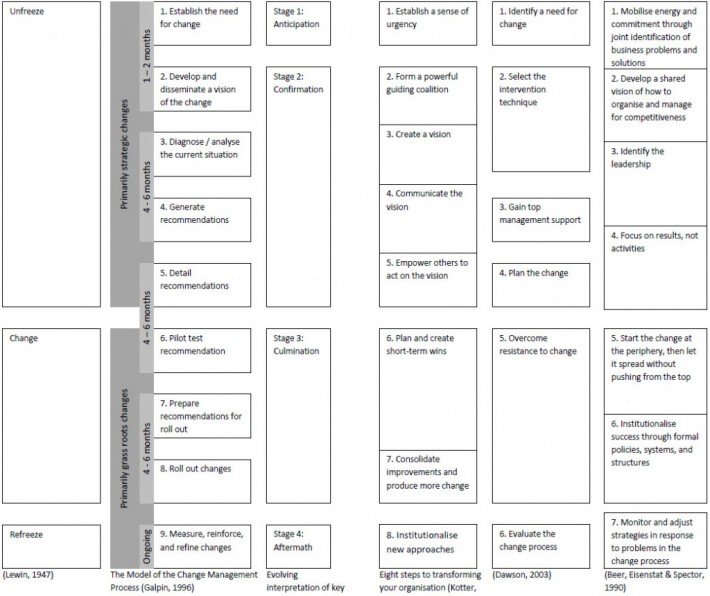David Collins’ formula for a guru change model: “n-steps” to doubling a digital agency
Could a guru change model have predicted my company’s growth? Probably not, but it might after I publish mine.

Let’s get linear
Linear change models are attractive to the overwhelmed organisational leader. With 300 tasks on our plates, we pay big money for someone to reduce our world into five simple steps. We hold step-by-step models up as shields to protect us from change failure statistics, confident we will have better outcomes.
Lewin started us off in 1947 with his three step unfreeze-move-refreeze approach. Others have since followed suit, looking at what worked in the past to prescribe future success. Some criticise these models as simplistic and not accounting for the near-chaos complexity faced by organisations, a premise even Lewin acknowledged.

David Collins takes a fairly sceptical view of models from what he calls gurus (aka medicine men/women) and management-heroes (aka sorcerers). Guru status in particular is seen as the highest evolutionary stage of a manager’s development. Collins critiques guru’s “n-step” models as inappropriately raising managers as elite, treating people as plastic, and ripping organisations out of context.
How to be a guru
The objective of the guru under Collins’ critical approach is not to create successful organisational change, but to develop a successful change model. Collins has graciously produced the proven framework for creating a change model:
First, the model conveys an understanding of the world of work which:
- is communicable and memorable;
- is individually focused;
- has a malleable vision of human nature; and
- is legitimating of management activity and the role of management and managers
Second, the model has an intellectual focus which enhances the status of management which has:
- a focus upon co-operation;
- some potential for managers to tailor the ideas and pronouncements of the guru in question;
- a leadership focus; and
- some potential to allow managers to develop a feeling of being in control in a world remarkable for its upheaval and dislocation
Third, the model has a practical appeal and application which:
- consists of a number of steps or principles;
- claims universal applicability;
- carries some authority or proof;
- carries the promise of improvement or turnaround
What actually happens
My company has doubled from 22 to 45 staff in the past 12 months. You could academically reflect on the process as a linear, rational change project to “grow the company”. You could plot the steps, identifying what worked and what didn’t, assessing culture, leadership, and personalities to create a model for anyone else preparing for similar outcomes.
If you did, you might sell some books but I question if anyone would replicate the series of events leading to the outcomes. The change process has involved hundreds of unplanned and reactionary initiatives occurring in a complex and chaotic environment. I have started dozens of linear change processes, few of which ended close to the planned end point. Factors such as unexpected external inputs and the fact that the change process involves real people have forced me to be flexible in my approach.
That said, people need structure. I went through a period of embracing postmodern deconstruction, acknowledging an inability to pick a clear destination due to the rapid pace of changes. The result was increased disillusionment and frustration.
People do not need to know the exact end point or the path to get there. What they do need is vision, a general direction, the immediate next steps, and a reason for the pain.
Linear models can provide a framework and instil a sense of control. The flip side is that the model can become more true than the reality of the situation and leaders may be unable to back away from the “plan” against which they staked their reputation.
This is my experience, anyways. Perhaps I’ll write a book about it someday… with a model… just don’t call me guru.

nice unicorn. 😉
Hi. Nice analysis. Thanks for reading my book!
Thanks David, pleasure to have you stop by! Thanks for writing it in the first place, it provided a healthy perspective lacking in today’s guru-focused culture.